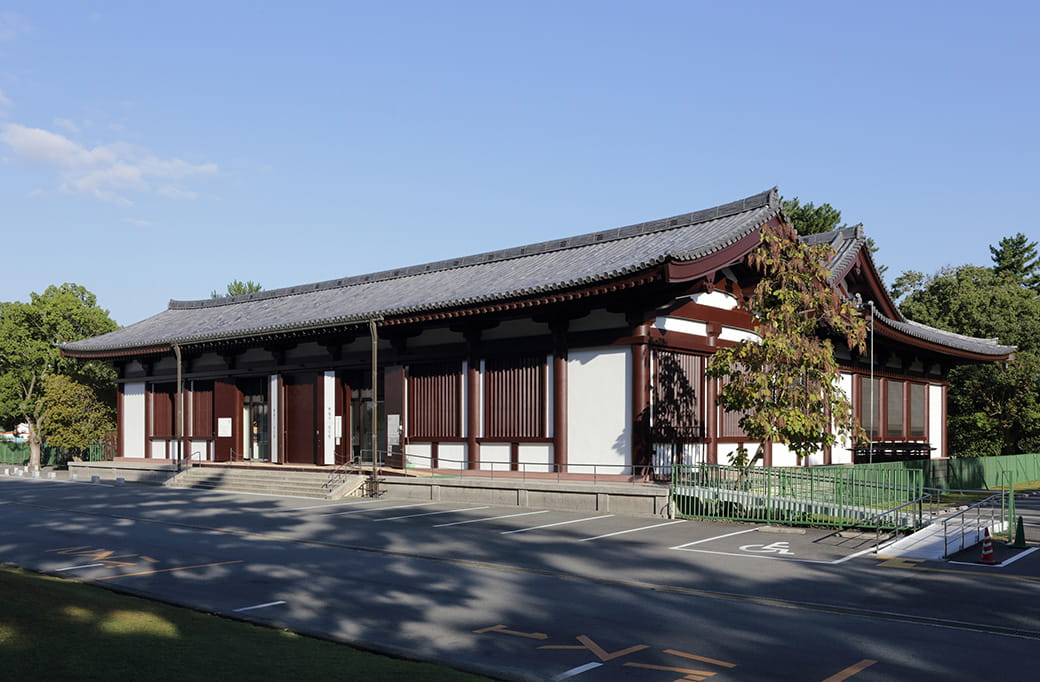National Treasure Hall

The Kohfukuji National Treasure Hall opened in 1959 as the first-ever facility for storing, protecting, and displaying cultural artefacts in the precincts of a shrine or temple anywhere in Japan. Its location was originally occupied by the temple refectory and its entrance hall. Although both of these Kamakura-period (1185-1333) structures were torn down in 1874 at the height of the anti-Buddhist persecutions of the early Meiji Period (1868-1912), the principal icon of the refectory, a colossal image of the Thousand-armed Kannon dating to the 13th century, miraculously escaped destruction and is now enshrined in its original location as the principal icon of the National Treasure Hall.
Prominent among the many National Treasures housed in the building are a number of images formerly enshrined in the Western Golden Hall, which was lost to fire in 1717 and has not yet been rebuilt. These include the Tenpyō-period (729-749) sculptures of the Eight Kinds of Mythological Beings (among them the famous Ashura) and the Ten Great Disciples, as well as Kamakura-period images such as the lantern-bearing demons Ryūtōki and Tentōki and the paired images of the Kongō Rikishi, or thunderbolt-wielding warriors. National Treasures originally associated with other temple buildings include a Hakuhō-era (late seventh century) head of the Buddha Yakushi, a set of wooden relief carvings of the Twelve Heavenly Generals, votive offerings deposited in the foundation of the original Central Golden Hall, and the lantern that formerly stood in front of the Southern Round Hall.

